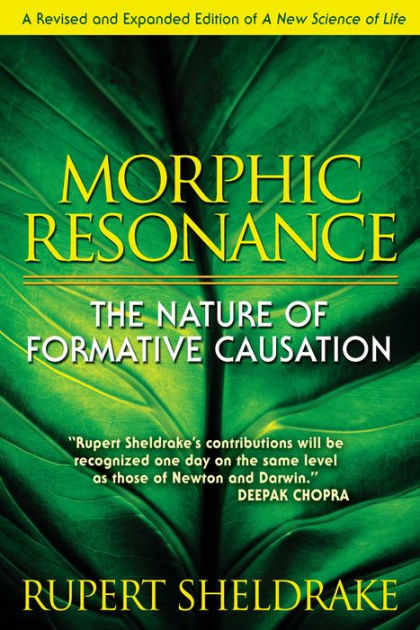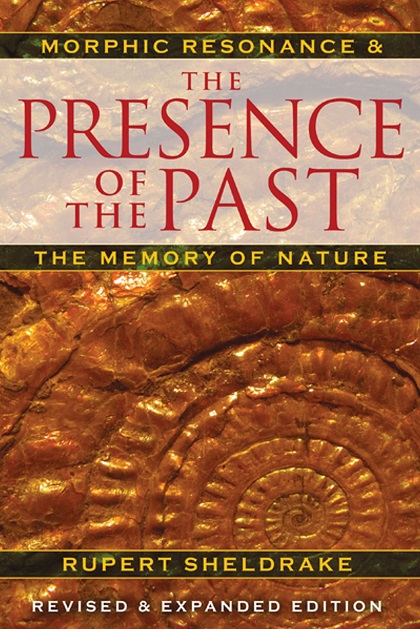|
home | what's new | other sites | contact | about |
||||
|
Word Gems exploring self-realization, sacred personhood, and full humanity
Dr. Rupert Sheldrake's Holons: morphic fields as hierarchical structure:
return to "Evolution Controversy" contents page
Editor’s note: The following discussion is from Rupert's lecture "The Biology Of Transformation: The Field," which might be viewed on youtube.
The other important general point about fields is that they’re hierarchically organized. They exist as “nested hierarchies,” parts within wholes… These could be sub-atomic particles in atoms, atoms in molecules, molecules in crystals, or they could be organelles in cells, cells in tissues, tissues in organs, organs in organisms, organisms in societies – everywhere you look in nature, there are levels of organization. The parts of one are wholes at their own level, containing parts which are also wholes at a lower level. Arthur Koestler called these [on the chart] “holons,” and he called this pattern of organization a “holarchy.” You could also call it a “nested hierarchy.” The higher level includes the lower levels.
It’s a bit like those addresses some of us wrote as children: “the house, the street, the town, the county, UK, Europe, the world, [the solar system,] the universe…” – there’s always a higher level of organization and each contains lower levels. And the point about holistic science is that it recognizes that Nature is made up of a series of levels or wholes. Reductionist science, still the predominant form within universities, tries to reduce everything to the smallest possible thing. That’s why, within biology, molecular biology is the most prestigious, most important, and best funded branch of the subject because molecules are the smallest things. That’s why, in physics, particle physics is the best funded branch because these evanescent particles, that last only tiny fractions of a second, are the smallest and most elusive things – you have to build apparatus costing billions of euros to study them – and the reason why people bother is that, they think “That’s where the answer lies, in the smallest things.” Holistic science tells us that’s not the case. There’s a whole series of levels, and to understand any level you have to study things at their own level. So, morphogenetic fields exist in a nested hierarchy. The field of an organelle is inside the field of a cell, the field of a cell is inside a field of a tissue, the field of a tissue inside the field of an organ. And these fields work on the order of lower-level systems, giving them order, structure, and pattern. So, this is a general overview of morphogenetic fields. I suggest that that’s just one kind of organizing field. [For example of another field], the nervous system, is highly indeterminate in its behavior, and that is organized by another set of fields, the behavioral fields; mental activity is organized by mental fields; social groups, like flocks of birds or termite colonies, are organized by social fields. All these kinds of fields are what I call morphic fields. “Morphic field” is the general category of which “morphogenetic field” is [a subset,] one species, it’s the kind of field concerned with the development of form in animals, plants, and crystals, [with other morphic fields governing behavior, social activity] and so forth. So, these are all different kinds of morphic fields. Now, how do morphic fields have the [form, structure, essence] they have, and how do they work? … Roughly speaking, they work by imposing pattern and structure on otherwise indeterminate and chaotic processes. Everything in Nature, except for some machines, is pretty well indeterminate. Chaos theory and quantum theory have revealed to us that the old illusion of science that everything is totally predictable is not true – it was just an illusion. Most of Nature is very unpredictable. That’s why, even with satellite photos, the weather forecasters don’t always get it right, because the weather is a chaotic system. It doesn’t obey simple deterministic principles; nor do breaking waves, nor do nervous systems, nor do biological organisms. Everything’s probabilistic. If you look at all the particular leaves on a particular tree, they all have the same genes, they all have the same morphic fields, and yet every leaf is different, the vein pattern is different; they’re even different on different sides of the same leaf. They all have the same general form, the same probability structure, but they’re individually different. Morphic fields impose pattern on probabilistic processes; they impose pattern on developing organisms; they impose pattern on the activity of the nervous system. So, they underlie behavior, as well, and underlie social organization. [In view of all this, how exactly is shape and form imposed on an organism?] Is this all programmed in the genes? Well, no – we know what they do – [genes] code for proteins, they enable us to make the particular proteins our bodies contain, that’s all -- [which is the general rule -- though] some of [the genes] are involved in the control of protein synthesis. [But, the genes] don’t explain the form of an organism. The genes give us the components we have in our bodies, a bit like the components in a tv set. They’re essential for that tv set to work properly, if you have defective components the set doesn’t work properly, but the pictures on the screen and the sounds you hear are not arising from those components by themselves. They depend on an invisible field to which the set is tuned. And that’s the same with organisms. The inheritance of form and behavior depends on morphic fields.
|
||||
|
|

